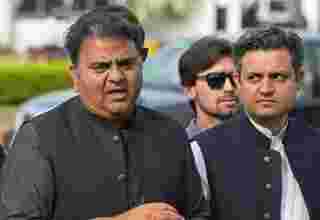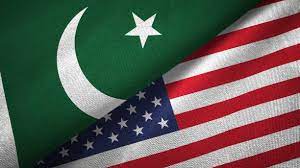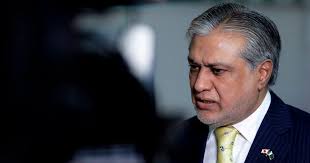ISLAMABAD, June 09(ABC): A day before announcing the budget for the fiscal year 2022-23, the coalition government reflected upon the performance of the economy for the outgoing fiscal year with a growth of 6% against the envisaged target of 4.8%.
Finance Minister Miftah Ismail, who succeeded Shaukat Tarin as the country’s finance czar in mid-April (which interestingly is when the survey review period ends), chaired the launch cer
emony of the Economic Survey 2021-22.
“The situation in Pakistan has remained the same whenever the country records growth but, unfortunately, it falls into the crisis of current deficit,” Miftah said in a televised press conference.
He said that historically, Pakistan’s economy had shown periodic boom-bust growth cycles. And the reasons for such volatile growth cycles included the wide-ranging economic challenges like shrinking fiscal space, exchange rate pressure, mounting current account deficit, and inflation, among others.
“The same has happened this time as well, the recent 5.97% growth recorded during the outgoing fiscal year 2021-22, according to the new estimates, has pushed Pakistan towards the balance of payments and current account deficit crisis,” the finance minister lamented.
GDP Growth Rate
He further highlighted imports have also increased by 48% as compared to the last fiscal year, while the exports have also moved up, adding that the trade deficit stood at $45 billion.
“I assure you that till Tuesday next week, the issue of foreign exchange reserves will be resolved as the expected $2.4 billion will be transferred from China,” he said.
The finance minister added that former prime minister Imran Khan left “landmines” — referring to subsidies — for the incoming government and it was tantamount to “giving people cheques that would bounce”.
“He knew that his government was going to be ousted, therefore, he left landmines for the next person to come in power — and that currently is Shehbaz Sharif […] but now was the time to rectify Pakistan’s economy.”
Miftah said the coalition government had saved Pakistan from defaulting, and from now, the country will witness “sustainable growth with responsibility”.
The finance minister said the growth would be sustainable as the country would not see a balance of payment crisis and current account deficit repeatedly.
He said that in the previous years, the exports were around half of the imports. However, the export-to-import ratio stood at 40:60 now, adding that Pakistan could only finance 40% of its imports through exports, and for the rest, it had to rely on remittances or loans — which makes the country remain stuck in a balance of payments.
Agriculture Growth Rate
A rich person spends a lot on imported items as compared to a low-income person, he said, adding that the government should financially empower the low-income segments of society to boost local production.
“If we do this, then maybe our domestic and agriculture production would increase, but it will not move up our import bill. This growth will be inclusive as well as sustainable,” he said.
“We also need inclusive growth. We have always facilitated the elite so they could boost the industry and benefit the economy. This is one strategy, but when we provide privileges to the elite, then our import basket gets heavier,” he said.
A rich person spends a lot on imported items as compared to a low-income person, he said, adding that the government should financially empower the low-income segments of society to boost local production.
Inflation
The finance minister added that since energy prices are too high in Pakistan, the local industry was “uncompetitive.”
He said the supply of gas supply to all industries has resumed after being shut for some time, noting that the supply to industries would not have been stopped had the PTI government entered long-term agreements.
The previous government did not make long-term plans, forcing Pakistan to buy energy and oil at costlier rates, which is leading to worsening the economy of the country.
“And this is not PML-N, JUI-F, PPP, or the coalition government’s economy whose economic situation is worsening; it is the state of Pakistan that is seeing an economic turmoil,” he said.
The finance minister, talking about the foreign direct investment (FDI), said it was around $2 billion in 2017-2018, but it stood at around $1.25 billion in the first nine months of the outgoing fiscal year.
Miftah said the trade and current account deficits have increased as compared to 2017-18 — the fiscal year when PML-N’s government ended — as an “incompetent” ruler was imposed on Pakistan.
Economic Survey
- The agriculture sector recorded a growth of 4.40 percent as compared to the last year s growth of 3.48 percent. The crops sector posted a growth of 6.58 percent against 5.96 percent of last year.
- The cotton crop increased to 8.3 million bales, rice production increased to 9.3 million tons and sugarcane to 88.7 million. Maize production increased to 10.6 million tons whilst wheat production decreased from 27.5 million tons to 26.4 million tons.
- The livestock posted a growth of 3.26 percent during the current fiscal year as compared to 2.38 percent during the same period last year. The fishing sector grew by 0.35 percent compared to growth of 0.73 percent in the same period last year. The forestry sector posted a positive growth of 6.13 percent against the negative growth of 0.45 percent last year.
- The domestic production of fertilizers during the first nine months of current fiscal year increased by 1.9 percent over the same period last year.
- During the first nine months of current fiscal year, the large scale manufacturing posted growth of 10.4 percent as compared to growth of 4.2 percent same period last year.
- The Mining and Quarrying sector remained negative at 4.47 percent as against the growth of 1.2 percent last year.
- The Fiscal Deficit widened to 3.8 percent of GDP during the first nine months of this fiscal year against 3.0 percent in the previous period. Similarly, the primary balance posted a deficit of 447.2 billion rupees
- Total revenues increased by 17.7 percent against 6.5 percent in the same period of last year.
- During the first ten months of current fiscal year, the FBR has been able to collect 4855.8 billion net tax revenues reflecting a growth of 28.5 percent.
- The private sector credit witnessed an expansion of 1312.9 billion rupees during the first ten months of current fiscal year.
- The Consumer Price Index inflation for the current fiscal year has been recorded at 11.3 percent as against 8.8 percent during the same period last year. The other inflationary indicators like Sensitive Price Indicator recorded at 16.7 percent as against 13.5 percent last year. Wholesale Price Index was recorded at 23.6 percent compared to 8.4 percent same period last year.
- The total public debt was recorded at 44,366 billion rupees at the end of March this year. Domestic debt was recorded at 28,076 billion rupees, whilst external public debt was recorded at 88.8 billion dollars.


































